Laurent Fignon: A tribute to an icon
French cycling lost one of its most enigmatic figures earlier this year, when two-time Tour de France champion Laurent Fignon died. Here is our tribute to a man who stood apart from the crowd.
Words by Lionel Birnie
Photography by Graham Watson

Laurent Fignon was laid to rest at Père Lachaise cemetery in Paris. It's a place with a special atmosphere, a sort of hushed reverance combined with a barely-contained frenzy. People come to see the graves of the famous. Oscar Wilde. Honoré de Balzac. Molière. Édith Piaf. Marcel Proust. And especially Jim Morrison. Not a day goes by without someone making the pilgrimage to the place where the lead singer of The Doors rests.
Now, among the artists and poets, painters and writers, philosphers and scientists, there will be a memorial to a cyclist. One of the few cyclists to have transcended the sport and was able to occupy an altogether more artistic plain. Laurent Fignon.
Fignon died in August aged 50. An aggressive cancer, detected in his digestive system some time in early 2009, proved to be a challenge too great even for a determined combatant like Fignon. His death came too soon, so terribly soon.
In the days that followed, the people who raced with him and got to know him paid their tributes. His greatest days on a bike were remembered with affection and the moments when he was less than likeable were brushed off with a shrug. Everyone knew he could be difficult, moody. His second wife, Valerie, even said so shortly after he had died. What was the point in saying otherwise? Fignon was Fignon.
Get The Leadout Newsletter
The latest race content, interviews, features, reviews and expert buying guides, direct to your inbox!
This is not a chronological review of his career. Instead it is a study of an icon, someone who was as French as the Eiffel tower and yet was not guaranteed a place in the affections of his compatriots. He was a man who encapsulated the alien quality of a deeply European sport for an English-speaking world that was just discovering its charm and beauty in the early Eighties. The results and the reports are there for all to see and they tell part of the story. And Fignon’s own account exists in his book Nous Étions Jeunes et Insouciants. Strictly speaking, the title translates as We Were Young and Carefree. It strikes me that insouciant is a more fitting description of the man because he wasn’t carefree in the sense of being absent from worry or concern, he was insouciant, with its indifferent, nonchalant connotations. This is intended to be a look at one of the few people in professional cycling who could be defined by a simple line drawing that everyone would recognise immediately. Try it. Two little round circles, a stripe for the headband and some wispy lines for hair. C’est Laurent Fignon. Without even trying, he was a brand, a trademark, instantly-recognisible and just as quick to provoke a feeling, whether admiration or dislike, respect or irritation.
More than one Fignon
Fignon married Valerie in 2000, several years after his career ended. She did not know him as a racer and she remarked that there was more than one Fignon. The professional cyclist and the man. In fact there were several Fignons because it appeared that he was able to compartmentalise his life and his various personas, detaching himself from one reality while immersing himself in another. With a click as satisfying as that on a downtube gear shifter, he was able to switch between his separate personalities seemingly without allowing one to seep across to another. It led people to think he was cold and awkward at times.
I can remember the first time I saw Laurent Fignon’s face. It was July 1983, the days before daily television coverage of the Tour de France. Sitting indoors on a Saturday afternoon, while others were out playing in the sunshine, I waited for the brief round-up of the week’s action from the Tour on ITV’s World of Sport programme. You got ten minutes, 15 if you were lucky. Clips of the action, Phil Liggett’s voice, a caption with the latest standings and then it was back to the Assembly Rooms, Derby, for the afternoon’s live wrestling.
Fignon had just inherited the yellow jersey from Pascal Simon, another Frenchman who had crashed and broken his collarbone but battled on for six agonising days until finally the pain and the mountains forced him to concede defeat. As soon as Fignon’s face appeared on the screen, it was all I could see. He wore little round glasses and a headband and he had blond hair that looked as if his mother had plonked a bowl on his head and cut round the rim. Just like mine.
He was 22 years old, a promising talent with some excellent results behind him but he was not a Tour champion. Not yet. The French said he was fortunate, that he would not have won the Tour but for Simon’s misfortune, and they may have a point. But he had yellow handlebar tape and a bright blue Gitane bike and the word Renault on his chest. It made him an instant hero. Only later did the significance of Fignon winning the Tour at the first attempt sink in. This was the sort of thing that only the greats were capable of. Anquetil, Merckx, Hinault.
The criticism that his victory had been a fluke, or at least owed plenty to a slice of poor fortune for a rival, stung Fignon. Hinault had missed the 1983 Tour through injury but in 1984 he was back, having left the Renault team to ride for La Vie Claire. Most were pretty certain Fignon would be taught a lesson by his former team-mate. The Renault team dominated the Tour and Fignon dominated the Renault team. Renault won ten stages, including the team time trial. Fignon was responsible for five of them. And he thrashed Hinault, handing him a defeat like nothing he had experienced before. Fignon won by ten-and-a-half minutes.
In late summer 1984, he stood imperious, an era of domination seemingly ahead of him. But as he wrote in his book: “Cycling is the naked truth.”
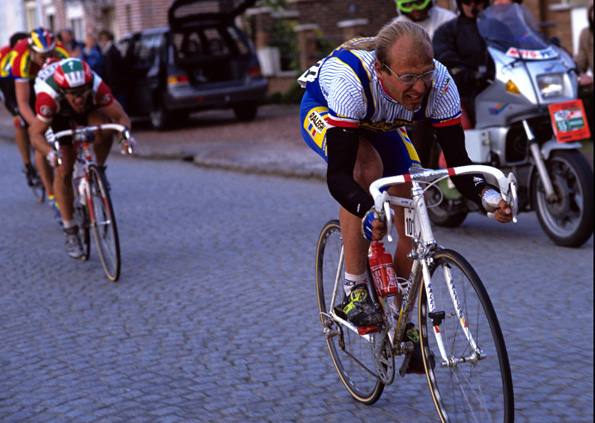
Eight seconds
What about the elephant in the room? Those eight seconds. Tick. Tock. Tick. Tock. What. If. What. If. To have your life defined by a defeat that narrow must have taken a stamina and patience that seemed beyond him during his more tetchy moments. As much as he disliked dwelling on it, he knew it had to be addressed. He accepted that it was the way most people saw him. His autobiography starts with a quote.
“Ah. I remember you. You’re the guy who lost the Tour de France by eight seconds.”
“No, monsieur, I’m the guy who won the Tour twice.”
He described talking about the 1989 as lancing the boil. “Let it bleed away in silence. It will bleed a good while yet.”
Fignon accepted that in sport there must be winners and losers. Without Fignon it would not have been The Greatest Tour of All. Without Fignon, Greg LeMond’s incredible comeback would not have been quite so incredible.
The two riders were so different. LeMond embraced technology, using the aerodynamic triathlon handlebars and a sleek helmet. For that final time trial, Fignon didn’t even wear anything on his head, just his ponytail flapping behind him. Some have speculated that he lost the Tour because he chose not to wear a helmet, that he might have held onto this advantage had he done so.
Who can forget seeing him riding up those final few hundred metres on the Champs-Elysées, the clock ticking by in the corner until eventually it was lost. LeMond’s joy and Fignon’s despair. To race for three weeks and lose by eight seconds is bad enough but imagine what he had to do afterwards. Exhausted, he had to go back to the Super-U team car and wriggle out of his skinsuit, shedding the yellow jersey for the final time in his career the way a snake sheds its skin, and put on his regular team uniform. Then he had to stand on the podium and try to mask the hurt, congratulate LeMond, a former team-mate who he did not care too much for as a racer, as best he could and listen to the American national anthem. All in his home city.
As much as he tried to shrug off that defeat, it stayed with him. It must have hurt all the more because he had been the most aggressive, most exciting rider of that year’s Tour. He attacked when he was strong, he attacked when he was weak. He tried to put LeMond on the ropes but the American, who he called ‘the great follower’ would not go down. Fignon attacked on a flat stage on Bastille Day. He had red, white and blue handlebar tape. Once again he was the living embodiment of the word panache, just as he had been in 1984.
Even in recent years, he was sore about how things turned out. Sean Kelly told Cycle Sport that when they bumped into each other during their work as commentators at the Tour de France, Fignon would ask if PDM had worked for LeMond in the 1989 race. LeMond had ridden for PDM in 1988 and it ended sourly but Fignon was convinced they had colluded to beat him. As Kelly said: “We were barely capable of working together for ourselves at times, let alone for someone in another team.”
As we wrote in our review of the 1989 race, it stands alone, almost as a bridge between the old world and the new. Fignon alluded to a similar theme in his book. “Many people feel this is the day that divides two radically different kinds of cycling. Is that surprising? The craftsmen were defeated by mass-production. Handmade goods were overwhelmed by factory-made stuff. Individuals were submerged in the anonymous mass. The people’s heroes were strangled and the glory of the Giants of the Road trickled away.”
Fignon was a one-off. Perhaps the last of the one-offs. He did not conform.
Having spent three weeks rooting for LeMond in 1989, the decisive moment sparked an empty feeling in the pit of my stomach. Suddenly, I wanted to take it all back. Seeing Fignon lying on the cobbles, empty, bewildered, made me wish he’d won instead.
That day came to define his life but it is interesting that his career was one of such incredible extremes. Tremendous highs and gut-wrenching hurt. He was brilliant and awful. Full of joy and a right miserable so-and-so.
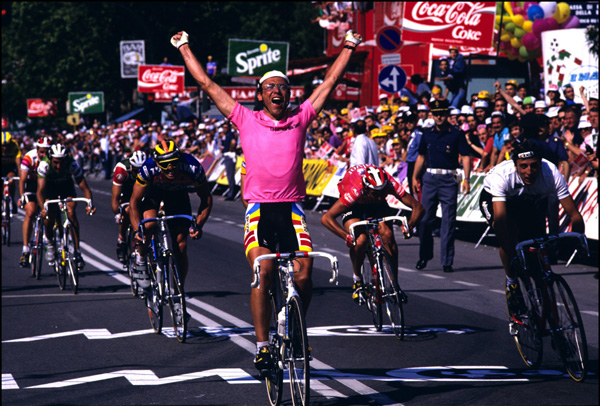
Late starter
Fignon didn’t ride a bike seriously until he was 15 because he was too interested in other sports, mainly football. When he joined the club they welcomed him nicely enough but told him he’d left it too late if he wanted to be any good. They made fun of his bike, which although a lightweight racer, was his dad’s old one. And then he won the first race he took part in, attacking near the finish and riding in alone. Within a couple of years he was winning half the races he entered.
Despite the nickname that came later, The Professor, he was not particularly academic. He quit university, where he was studying stuctural and material sciences, so he joined the army to keep his parents off his back. There, he raced for the army team, later joined one of the top clubs in Paris, US Creteil and by 1981 was a regular in the French amateur squad.
When he turned professional in 1982, he joined the Renault team run by Cyrille Guimard and headed by Bernard Hinault. In his first year, he wore the pink jersey as leader of the Giro d’Italia for a few days then, towards the end of the season, he succumbed to what you might call a Fignon-esque piece of poor fortune. Soaring towards the finish in Chaville, a suburb of Paris he knew well, at the end of the Grand Prix de l’Automne – a race that is now Paris-Tours – his bottom bracket cracked and his bike collapsed under him, sending him crashing to the floor.
His career encompassed great triumphs but also these moments of disaster. In 1984, he should have won the Giro but was left convinced that the Italians had ganged up on him to ensure an Italian won. The big stage in the mountains was diverted, avoiding the Stelvio pass, which organisers said was covered in snow. Pictures taken by helicopter later showed the road was clear leaving Fignon with the impression the mountain had simply been removed to neutralise the advantage he’d have over Francesco Moser. A few days later came the decisive time trial. Fignon was angry that a television helicopter flew ahead of him a little too close and produced a strong headwind for him. He lost the Giro to Moser. “The helicopter story pissed me off, but not any more,” says Moser. “It has become part of cycling, part of the legend, like Laurent.”
After such a glorious Tour victory later that summer, Fignon was tempted to say that he thought he had maybe three or four more wins in him. But it did not turn out that way. A series of injuries, particularly knee problems, wrecked much of the following four years.
Fignon did not cope well with being unable to produce his best. It brought out his irascible side. He reacted badly to criticism, he rode at the back of the peloton in a sulk and occasionally he lashed out. In the 1986 and 1988 Tours he was in a foul temper. He quit both races. In 1988 he was troubled by his knee again and had dropped back to the doctor’s car. A squadron of cameramen on motorbikes went back with him, hovering around him waiting for him to abandon. They enraged Fignon and he hurled a bidon at them. Watching that incident just made him even more appealing. He was flesh and blood, capable of outbursts like the rest of us.
There were flashes of his former genius but they were rare. In 1988 he won Milan-San Remo, outsprinting Maurizio Fondriest at the finish. Rather than savouring the moment, he chided himself for being unable to drop the Italian. Knowing how much sweeter it would have been to win alone he vowed to come back and do so. Twelve months later he won the same race in very different style but he arrived at the finish by himself.
During the 1987 Tour he won at La Plagne in the Alps, jumping past the Spaniard Anselmo Fuerte near the finish and just about holding on. Watch the outstretched arms and the joyous expression. And yet how typical it was that his victory was overshadowed by what happened a few minutes later, as Stephen Roche pushed himself to the limit to almost catch Pedro Delgado on the line and keep himself in the hunt for the yellow jersey.
Then came 1989. He won the Giro but lost the Tour. But he never stopped fighting. At the World Championships he attacked repeatedly but was beaten again by LeMond.
Hand crafted
Fignon was a one-off. As he put it, he was hand-crafted rather than mass-produced. He raced according to how he felt. If he felt good, he wanted to put people to the sword. He believed that there was more to winning than crossing the line first and, if he could, he wanted to do it in style. But that is not to say he was necessarily a beautiful rider to watch. He rode in uncomfortably big gears at times and his shoulders rocked from side to side, even when he was going well, in fact, especially when he was going well. But perhaps the sense of nostalgia for his era and the sadness at his passing was so great because we know that there are so few like him today.
Despite being so familiar and as accessible as his televsion personality became while he was working as a commentator and pundit, few can say they knew Fignon. It is striking that his book barely mentions either of his marriages or his children. Nor does he talk about his likes and passions away from cycling. It is a book about his sport and so only one Laurent Fignon surfaces in it. The others are not for public consumption.
Those who got to know him say he was warm and funny and enjoyed nice wine and a good meal. On television we saw a glimpse of that. When he laughed his shoulders would bob up and down. When he made a joke he was particularly pleased with his head would make a little involuntary jutting movement, like a little bird pecking at a worm with its beak.
They say you should never meet your heroes because you will only be disappointed. Fignon was an exception. The first time I met him was at Flèche Wallonne in 2000. He had bought Paris-Nice from the Leuillot family and was trying to revitalise the race. He had restored the Col d’Eze time trial, which had been absent for a number of years. Cautiously, I handed him a copy of Cycle Sport. He looked puzzled but I explained there was an article about Paris-Nice in it. He asked what I’d thought of the race. I said it had been good. “Yes, but what about the course?’ With that, he was off, speaking quickly, passionately. “The stages, we need more drama next year, we need to re-establish the character of the Race to the Sun.” As a former winner, I asked him what he thought about Flèche Wallonne and he shrugged. “I won when it was 250 kilometres long,” he said. “There’s a huge difference between 200 kilometres and 250. Huge,” he added spreading his arms wide and puffing out his chest.
Fignon’s dreams for Paris-Nice did not come true. He found that as an independent organiser, negotiations with television companies and sponsors were difficult, especially with mighty ASO lurking, waiting for an opportunity to add the race to its portfolio. There were rumours at the time that he was in financial difficulty, which he confirmed in his book, and that he spent some time sleeping on a little camp bed in his office because his first marriage was over, which was something he did not reveal in the book.
Eventually, Fignon had to sell to ASO but his vision for cycling was undimmed. He had a surgeon’s skill when it came to dissecting the problems of the sport and an entrepreneur’s vision when it came to seeing the future. Entertainment and excitement must prevail over caution and conservatism. The fans want a reason to switch on the television to watch a race.
After selling Paris-Nice, Fignon continued to promote Paris-Correze, a smaller stage race, but he withdrew from the scene. He was notoriously guarded about giving interviews. In fact, my colleague Edward Pickering spent the best part of two years badgering him for one but he was extremely reluctant.
Until we heard Fignon had a new passion. Golf. Using the lure of a round of golf at Hampton Court Palace as bait, we invited Fignon to London. The deal was simple. The interview would be done by Edward in the evening and the following day, golf day, no one would mention cycling – and particularly not the 1989 Tour de France.
To say it was nerve-wracking arriving to meet him is an understatement. Playing sport with sportsmen is always an ordeal of one sort or another. Golf, being the test of character it is, even more so. But I learned more about Fignon in those four hours on the golf course than from watching him ride a bike or reading an interview about his career.
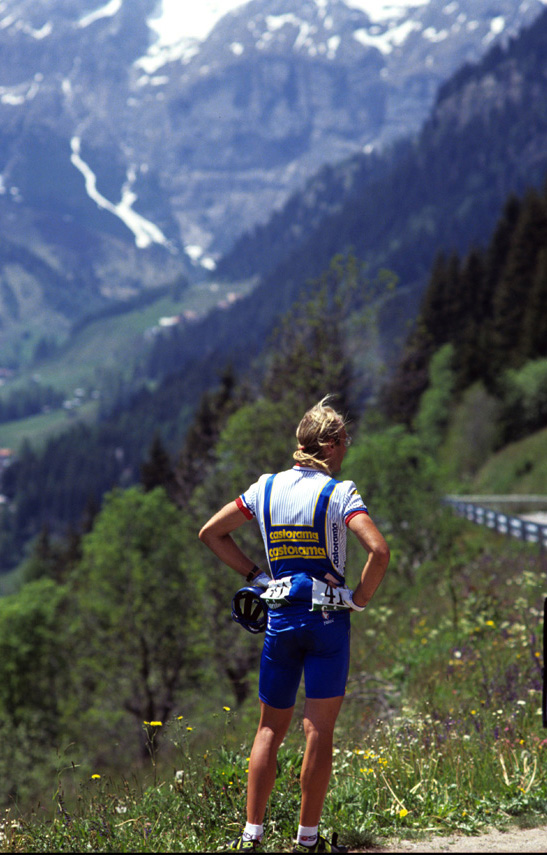
He took the game very seriously. Watching him play was like flicking through the Ladybird Book of Body Language. You didn’t need to see the swing or watch where the ball went to know whether it was a good shot or not, just see his reaction. If he was happy, he was almost light on his toes, he bobbed his head and he put the cover back on his driver with a flourish. But if it was bad shot he put his club back in the bag with the grace of a man slamming the kitchen cupboards after a row with his wife. But what was most telling was when he played a perfectly good shot but got a poor outcome, like the time he sent an iron shot soaring towards the green only for the breeze to blow it into a bunker. Then he was really agitated. He’d done everything right and he’d been treated unfairly. Merde.
On the front nine, I somehow contrived to birdie a par five hole while Fignon skidded his approach shot over the back of the green and under a tree. A few holes later, on another par five, he rolled an eagle putt up to the hole and tapped it in for a birdie. I’d had a nightmare, hacking about in the rough, and had picked my ball up and conceeded the hole while still a good 150 yards from the green. I stood to watch the others putt out. Fignon came hopping over and patted me on the arm and said in English, just about the only English he spoke all day: “No birdie for you, zis time, eh?”
As he said in his book:
“Is it a crime to have a competitive soul and a gambler’s blood?”
Emotional finale
When it comes to remembering him, it’s tempting to define his career with that Sunday afternoon in Paris 21 years ago, when the clocked ticked against him on the Champs-Elysèes. But I prefer to think of a time a few days earlier, when he attacked on the Côte de Saint-Nizier on stage 18, stretched his lead on the flat and stayed away to the finish despite that spirited chase from PDM and Delgado. That was Fignon in full flight, rocking from side to side, putting them to the sword. He made me want to ride a Raleigh with red, white and blue handlebar tape. Later that year, I bought a Raleigh frame and slowly built it up, dedicating all my pocket money and scouring the classifieds for the best deal on Campagnolo components. I never did manage tricolour handlebar tape. The best I could do was to tape one half of the bars red, the other half blue. Well, there only ever was one Laurent Fignon, wasn’t there.
Fignon’s career declined after 1989, although he enjoyed an emotional final Tour de France stage victory in Gatorade’s colours at Mulhouse in 1993. He was also the most recent Tour de France champion to have a serious go at winning Paris-Roubaix, as he did in 1990.
In his book he wrote of how he felt he was curtailed by the arrival of EPO in the peloton, he also admitted to using amphetamines to help him train on a rare occasion, and he tested positive a couple of times in his career.
His attitude to doping seemed to be that it didn’t get really serious until the undetectable blood-boosters arrived in the early 1990s. He overlooked the fact that the history of doping in the sport is a continuous line, not a broken one. One kind of doping sometimes leads to another, sometimes it doesn’t. One person’s idea of what is okay and what is not may differ from someone else’s but the mentality is the same. Fignon sought to ignore that, sticking with the belief that it was something that got totally out of hand without seeming to understand that had EPO been available a decade the earlier, the same situation would have arisen. It would have been fascinating to know what Fignon – a progressive and visionary follower of the sport right to the end of his life – made of that question.
As a television pundit, Fignon was outspoken but he was not damning for the sake of it. He was incisive and insightful. As a rider, Fignon did not take criticism well. He did not suffer fools gladly. And he thought most journalists were fools. But he spent the final years of his life on the other side of the fence, admittedly with the experiences of a varied career behind him, and he was not slow to dish out the criticism when he felt it was warranted. He could analyse a rider’s tactics and point out where they had gone wrong with the vocal equivalent of a stomp on the pedals.
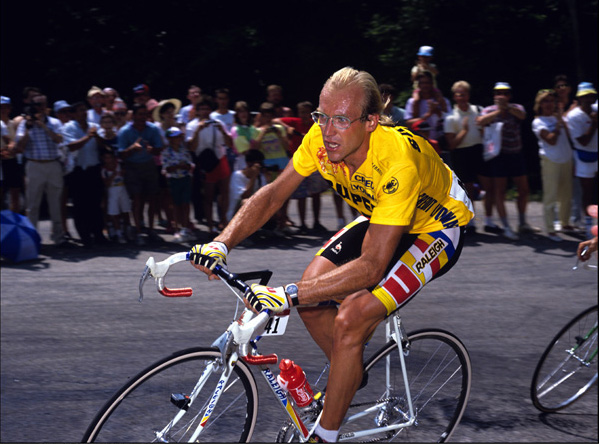
But it left you wondering what Young Laurent Fignon would have made of it if he had been analysed in such a way by Older Laurent Fignon.
That he worked at this year’s Tour de France shows how cycling had regained its place in his affections in recent years. Seeing the pictures of him on the podium with Bernard Hinault are almost heart-breaking. Hinault’s eyes are moist but Fignon is smiling. They both knew it would be the last time.
Laurent Patrick Fignon.
Born in Montmartre, Paris, August 12, 1960. Died in Paris, August 31, 2010.
This article first appeared in the November 2010 edition of Cycle Sport.
Follow Cycle Sport Twitter: www.twitter.com/cyclesportmag

Thank you for reading 20 articles this month* Join now for unlimited access
Enjoy your first month for just £1 / $1 / €1
*Read 5 free articles per month without a subscription

Join now for unlimited access
Try first month for just £1 / $1 / €1
Edward Pickering is a writer and journalist, editor of Pro Cycling and previous deputy editor of Cycle Sport. As well as contributing to Cycling Weekly, he has also written for the likes of the New York Times. His book, The Race Against Time, saw him shortlisted for Best New Writer at the British Sports Book Awards. A self-confessed 'fair weather cyclist', Pickering also enjoys running.
-
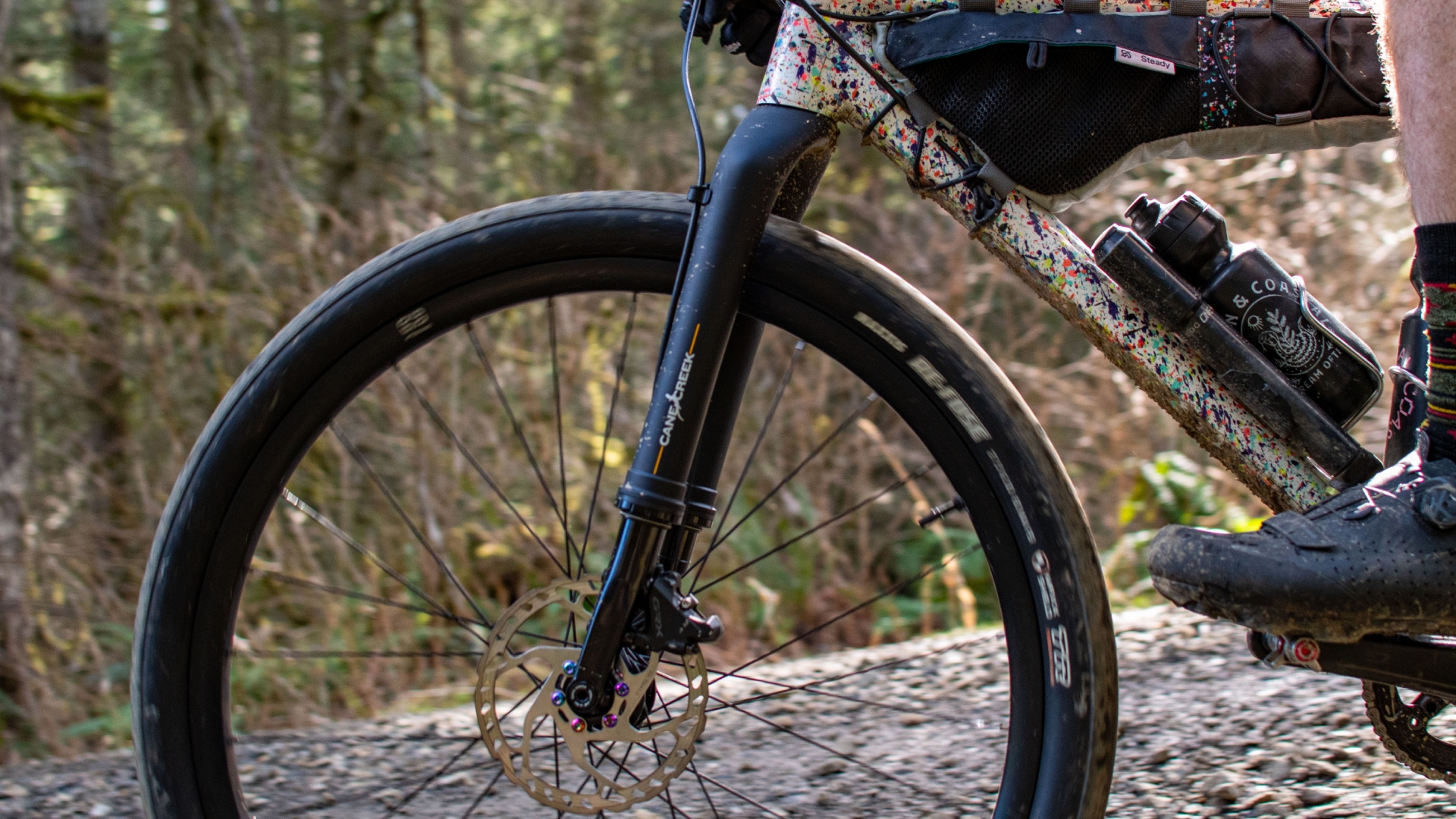 Review: Cane Creek says it made the world’s first gravel fork — but what is a gravel fork, and how does it ride?
Review: Cane Creek says it made the world’s first gravel fork — but what is a gravel fork, and how does it ride?Cane Creek claims its new fork covers the gravel category better than the mini MTB forks from RockShox and Fox, but at this price, we expected more.
By Charlie Kohlmeier
-
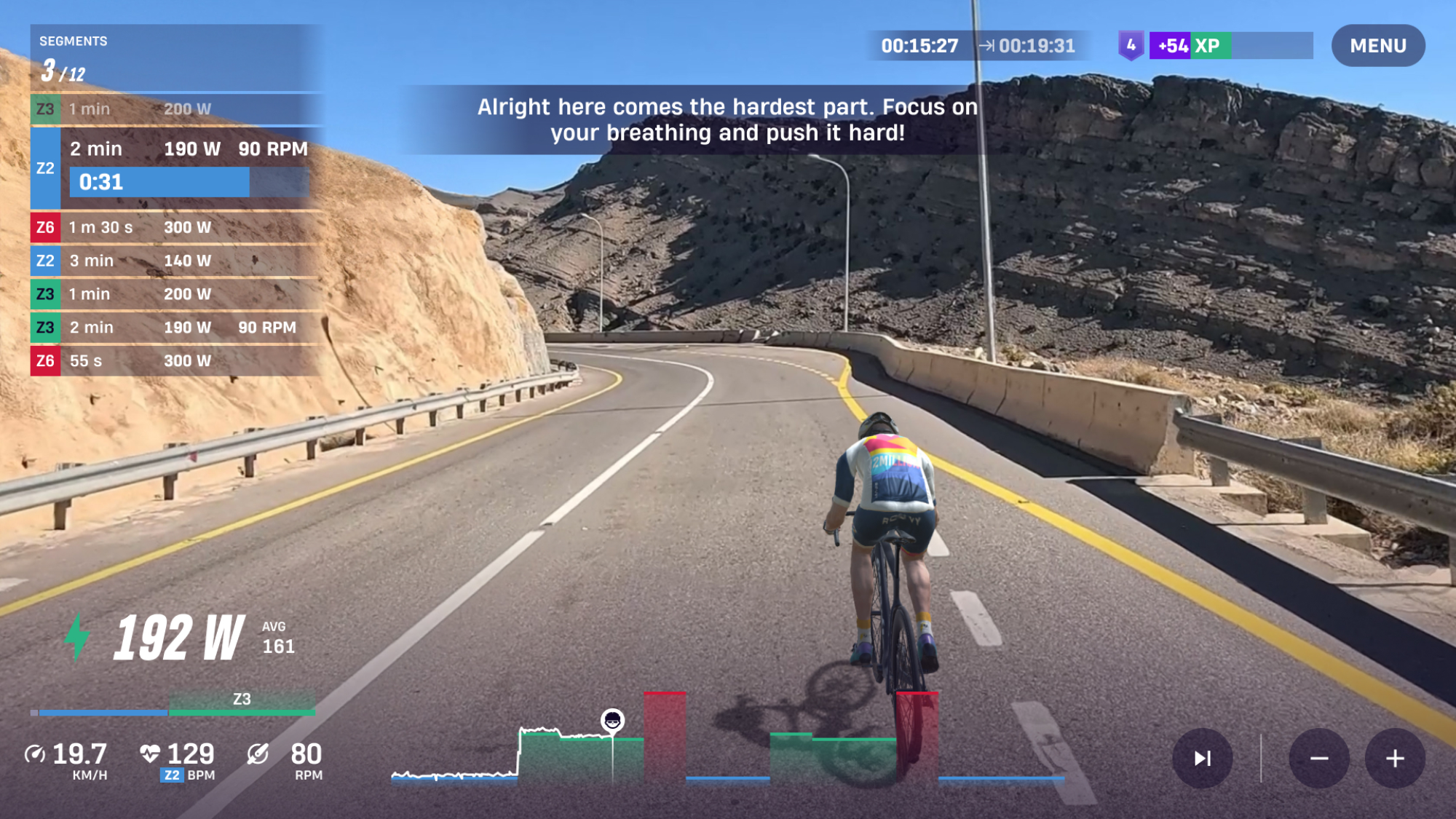 ROUVY's augmented reality Route Creator platform is now available to everyone
ROUVY's augmented reality Route Creator platform is now available to everyoneRoute Creator allows you to map out your home roads using a camera, and then ride them from your living room
By Joe Baker
-
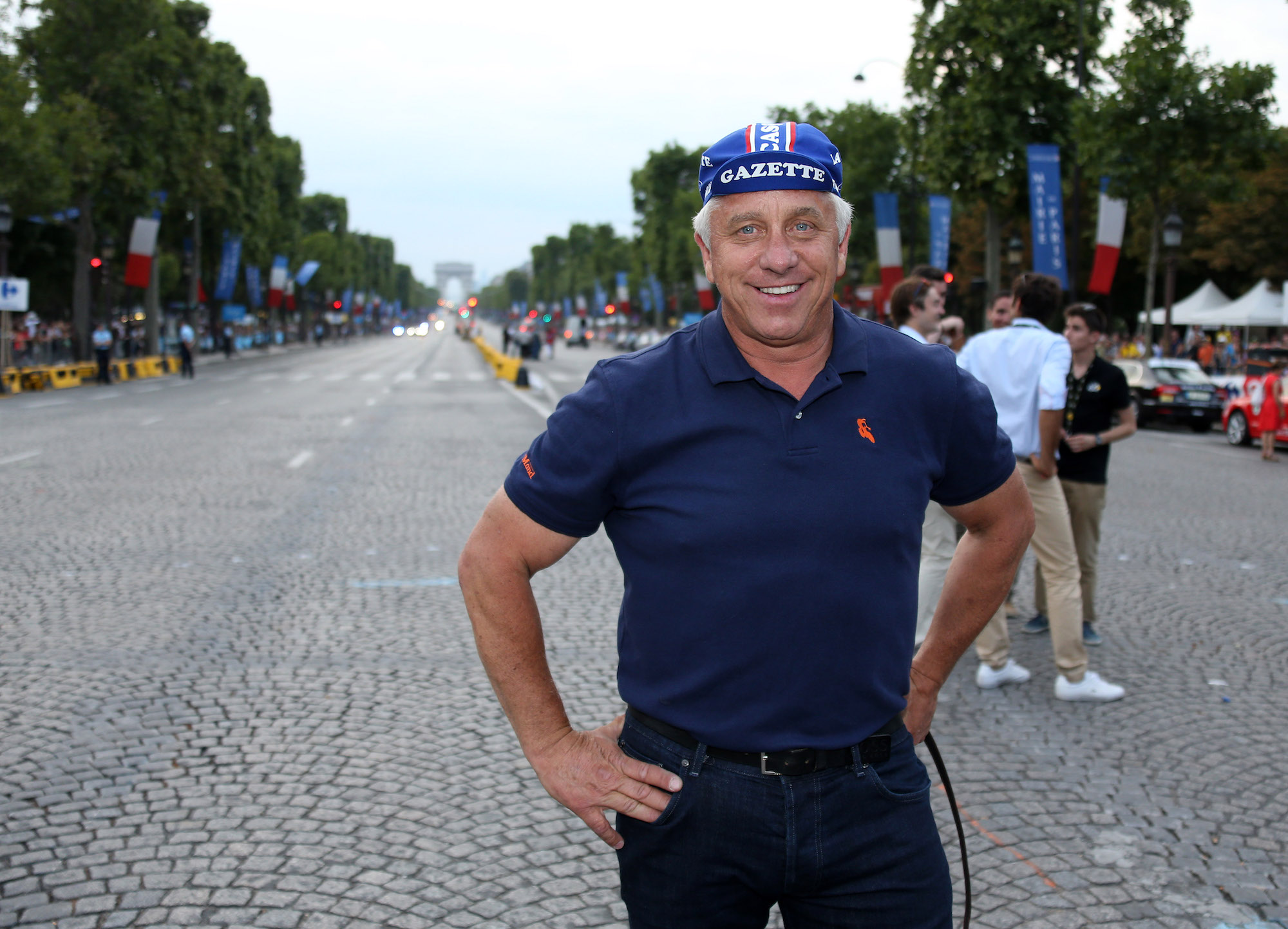 Greg LeMond becomes first cyclist to receive Congressional Gold Medal
Greg LeMond becomes first cyclist to receive Congressional Gold MedalLeMond becomes only the 10th athlete to win the highest civilian award in the USA
By Jonny Long
-
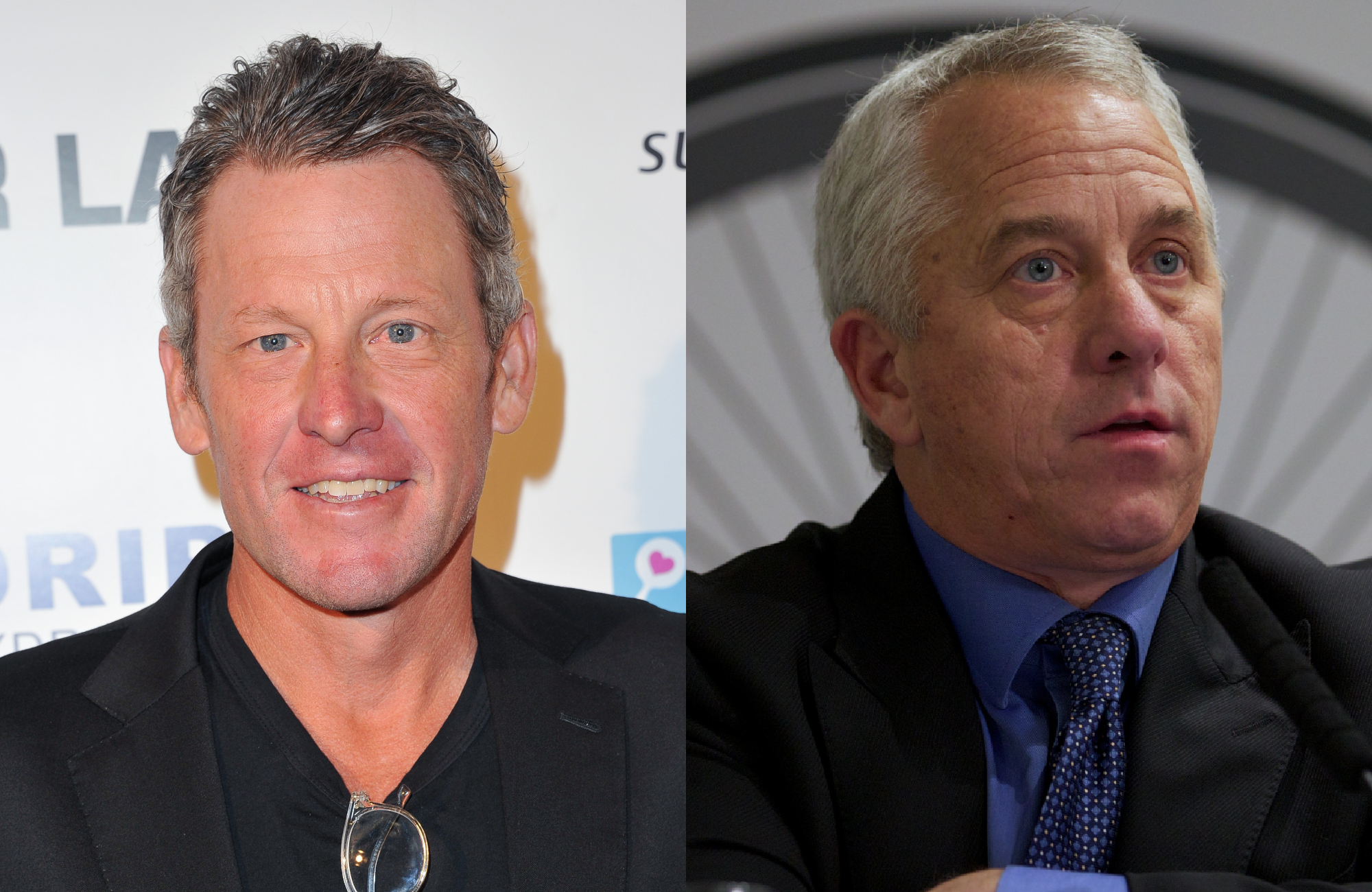 Lance Armstrong says he didn't like the Greg LeMond part of the ESPN documentary
Lance Armstrong says he didn't like the Greg LeMond part of the ESPN documentary'There are still very specific things that I think still upset him,' said the film's director
By Jonny Long
-
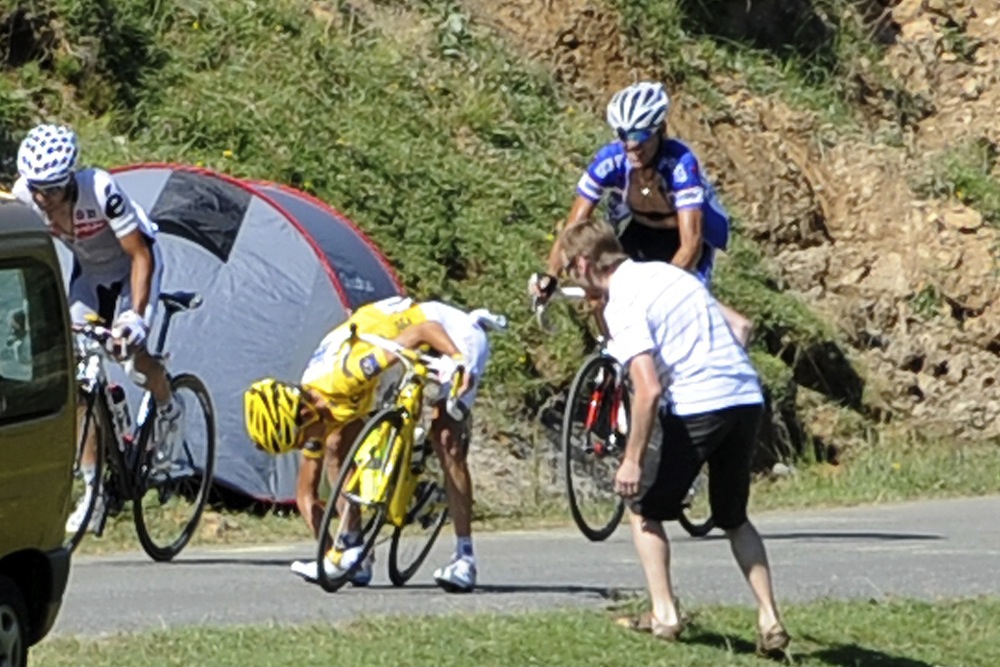 Five times the Pyrenees blew the Tour de France wide open
Five times the Pyrenees blew the Tour de France wide openThe Tour de France can be won and lost in the Pyrenees, so take a look at some of the iconic moments in recent Tour history in the mountain range
By Stuart Clarke
-
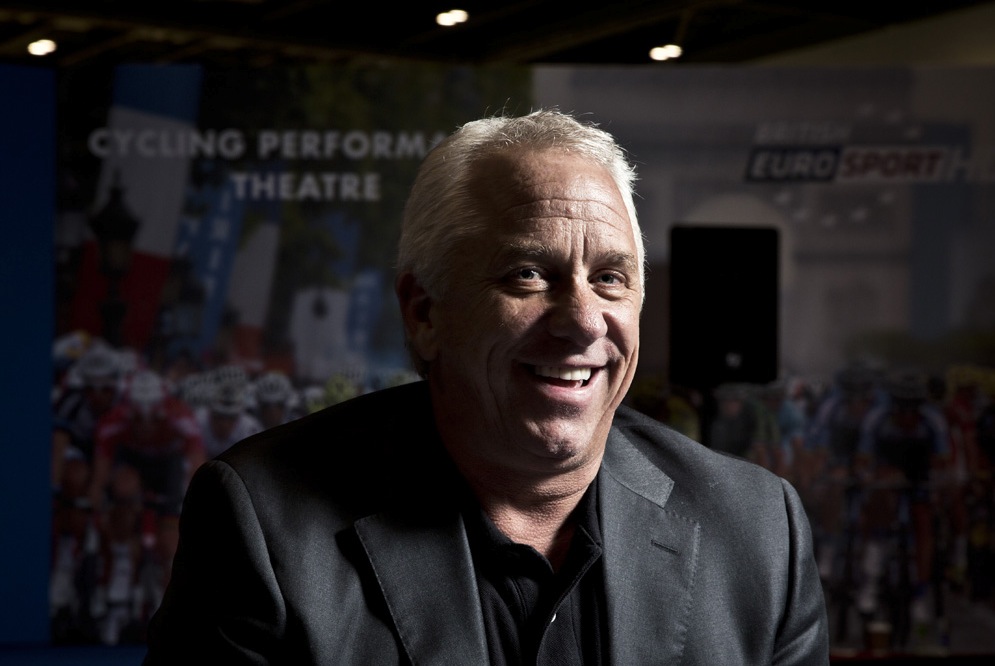 Greg LeMond: The Giro was like a training ride in my day
Greg LeMond: The Giro was like a training ride in my dayThree-time Tour de France winner Greg LeMond backs Alberto Contador's Giro-Tour double, but says it will be harder than when he rode them in the eighties.
By Stuart Clarke
-
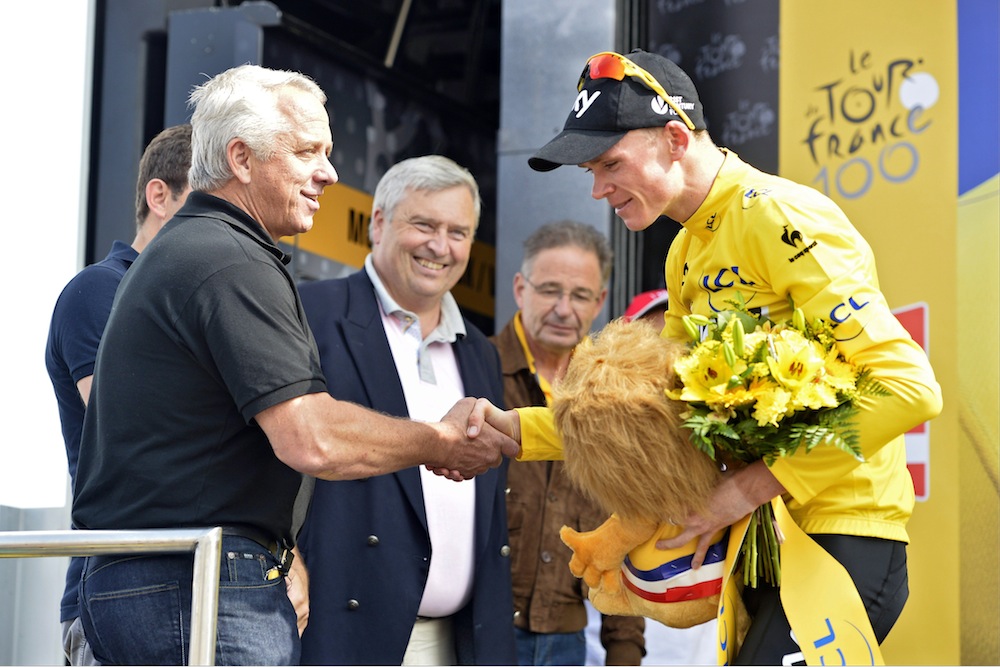 LeMond: Quintana will be Froome's biggest Tour de France rival
LeMond: Quintana will be Froome's biggest Tour de France rivalThree-time Tour de France winner Greg LeMond is backing Chris Froome to win the Tour de France, but insists Nairo Quintana will give him a run for his money
By Stuart Clarke
-
Classic races: 1990 Tour de France
By Edward Pickering
-
 Classic Races: Tour de France 1990
Classic Races: Tour de France 1990An early escape turned the 1990 Tour into a three-week game of catch-up for reigning champ Greg LeMond. Would he recapture last year’s triumph or had he left it too late?
By Cycle Sport
-
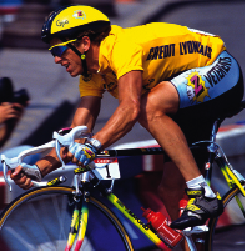 Greg Lemond Interview: Tour de France 1990
Greg Lemond Interview: Tour de France 1990Cycle Sport talks to Greg LeMond about his 1990 Tour de France win
By Cycle Sport